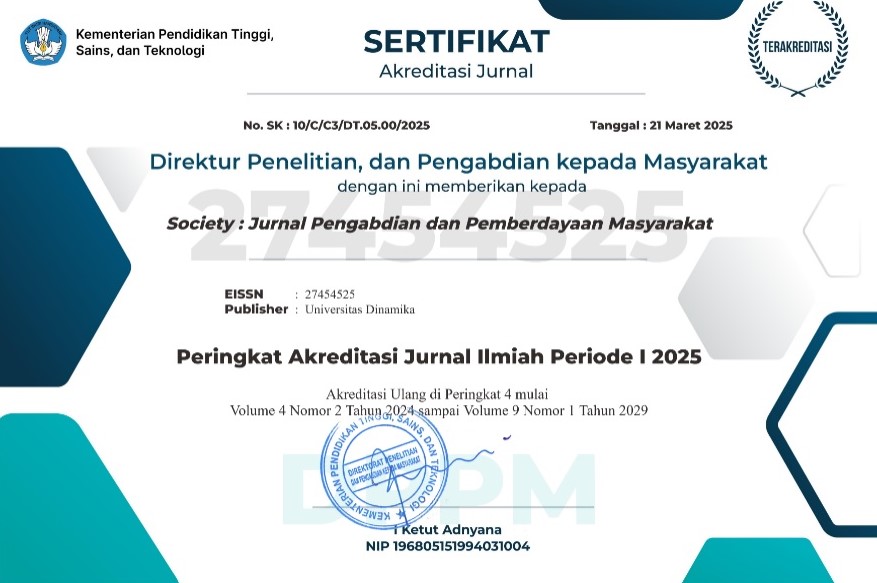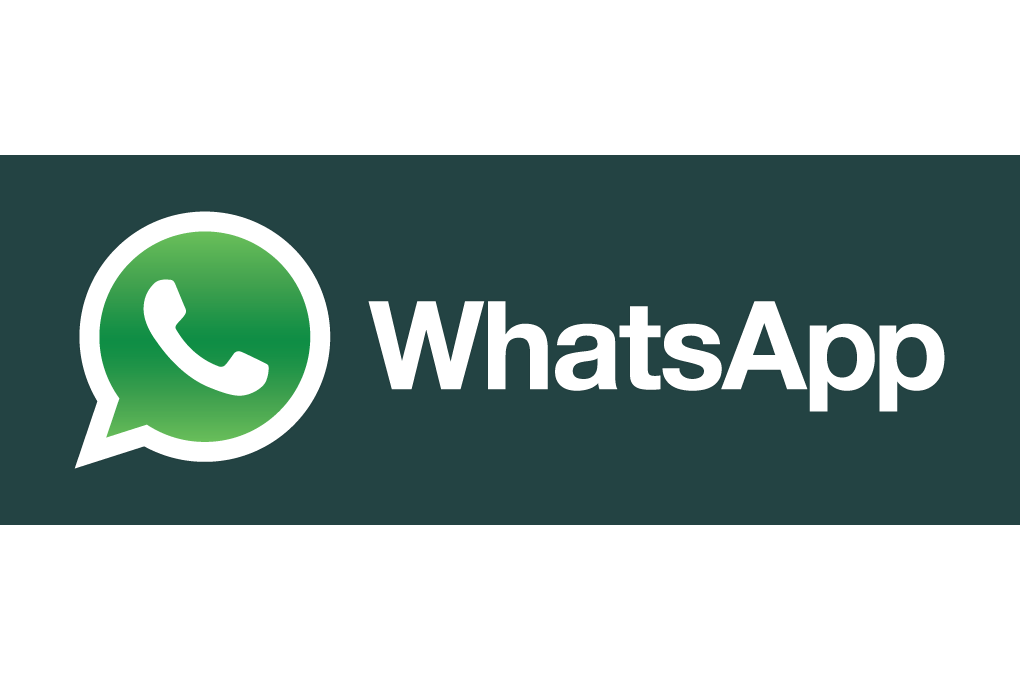Author Guidelines
Submission Guidelines
GENERAL REQUIREMENT:
The submitted manuscript has never been published and is not in the process of evaluating other publications; it has obtained the approval of the co-author, if any, as the party who is equally responsible for the manuscript. The publisher will not be liable for claims or requests for compensation for matters relating to the manuscript. Manuscripts should be submitted via the submission menu in the Society: Jurnal Pengabdian dan Pemberdayaan Masyarakat at the address https://e-journals.dinamika.ac.id/index.php/society/about/submissions. Manuscripts submitted must be typed on A4 paper, one-spaced with paper margins, right, left, top, and bottom 3 cm. The length of the manuscript should be at most ten pages, including tables and figures. Please download the Ethics Statement and Copyright Agreement. Please sign and submit a Statement of Ethics as part of your initial article submission or during the submission phase. The Copyright Agreement must be submitted before the article can be published. The Statement of Ethics and Copyright Agreement can be uploade on the submission phase or sent by email (society@dinamika.ac.id).
JOURNAL SCOPE:
This journal contains the results of the implementation of community service and empowerment programs. The results of the implementation of community service and empowerment programs are discussed comprehensively and aim to provide information about community service.
SUBMISSION PREPARATION
LANGUAGE:
Articles are written in Indonesian and English (abstract and keywords). The use of the term follows the KBBI (The Great Indonesian Dictionary).
TYPES OF MANUSCRIPT:
Manuscripts are arranged in the following order: title of the article, author’s name, the origin of institution and email, abstract in Indonesian and English (250 words) and keywords (Indonesian and English) seperated by semicolon, introduction, method of implementation, results, and discussion, conclusion, acknowledgment (if any) ends with a bibliography using the reference management tool (Mendeley).
ARTICLE TITLE:
The title should be short, factual, and informative, accurately reflecting the manuscript’s content. The title cannot be more than 16 words.
AUTHORS’ NAME:
The author’s name, the name of the institution where the author works, and his email are listed below the title. If there is more than one author, then the writing of his name follows the writing code of ethics. In addition, the maximum number of author is 8 authors.
ABSTRACT:
The abstract summarizes the most important elements of the manuscript, written in one paragraph of no more than 250 words. Abstracts must be able to briefly describe the problem, purpose of writing, method of implementation, results, discussion, and conclusions. Avoid abbreviations and references in the abstract.
KEYWORDS:
A minimum of three to six keywords consisting of one word or a combination of words that indicate the main subjects in the manuscript, are seperated by semicolon and are written in alphabetical order.
INTRODUCTION:
The introduction describes the analysis of the situation or objective condition of the subject of service (partners), issues and focus of service, reasons for choosing the subject of service, and expected social changes or goals of community service. The introduction is presented in an integrated manner in the form of paragraphs and cited with relevant literature.
DISCUSSION:
Contains a description of the results of the community service process, namely an explanation of the dynamics of the mentoring process (various activities carried out, forms of technical action, or program action to solve community problems). It also explains the expected emergence of social change, for example, the emergence of new institutions, changes in behavior, the emergence of local leaders, the creation of new awareness towards social transformation, and so on.
CONCLUSION AND SUGGESTION:
The conclusion must indicate the results, strengths and weaknesses, and the possibility of further development. Conclusions can be in the form of paragraphs, but preferably in the form of points, using numbering or bullets.
ACKNOWLEDGEMENT (IF ANY):
Addressed to parties who have assisted in completing activities or funding.
UNITS OF MEASUREMENT:
Units of measurement in text and graphics use the metric system, for example, in units of microns, mm, cm, km, for length; cm3, liters for volume; and g, kg, tonnes by weight. Avoid using pikul units, quintals, and so on.
TABLE:
Tables should be given short but clear titles with sufficient notes, including table sources if the table refers to other references so that each table can explain the information presented independently. Each table is numbered sequentially and reviewed in the text.
FIGURES AND GRAPHICS:
Figures and graphs must be explained in an informative manner. As with the table, the information on the graph must be sufficient to be presented independently. Figures and graphics should be reviewed in the text. Black and white or color photos should be of good quality.
REFERENCE:
Reference compiled using the Mendeley software, Citation Style: APA (American Psychological Association), with a list of minimum 15 references. Primary literature from several authors is expected to be more numerous than secondary literature. The novelty of the library has been attempted for the last 10 years.
MANUSCRIPT SELECTION MECHANISM
The editors make corrections and improvements and change the format according to the journal’s informative nature without changing the manuscript’s meaning. The editor will return the manuscript to the author to be corrected following the results of the editorial corrections and the rejected manuscripts with reasons according to the editorial board’s decision. The author is expected to immediately return the revision of the manuscript so that it can be published on time.
JOURNAL WEBSITE SUBMISSION GUIDE
The following is a guide for submitting articles to the Society: Jurnal Pengabdian dan Pemberdayaan Masyarakat (Unduh).



















